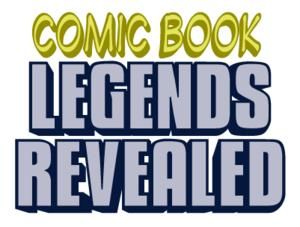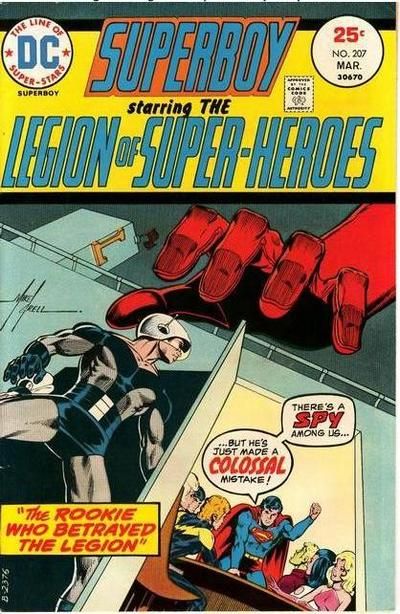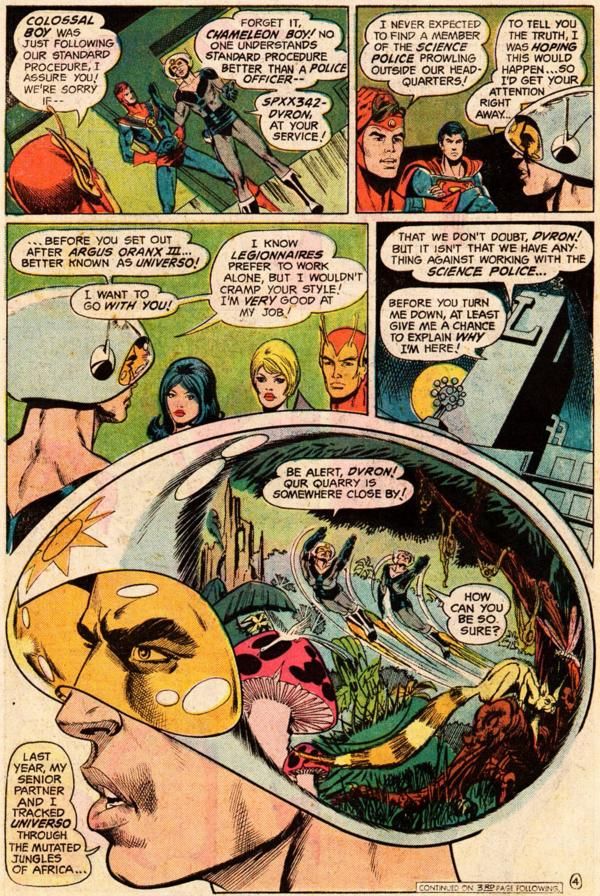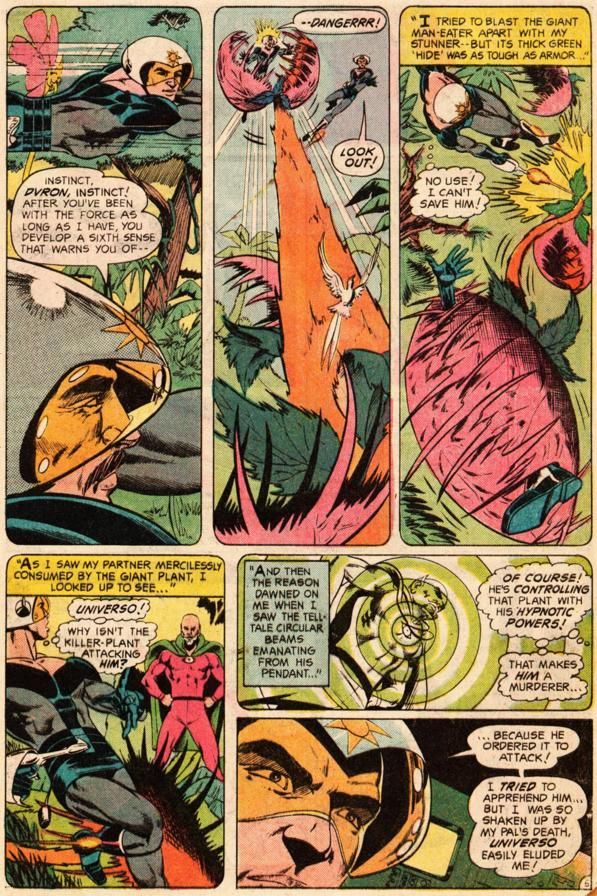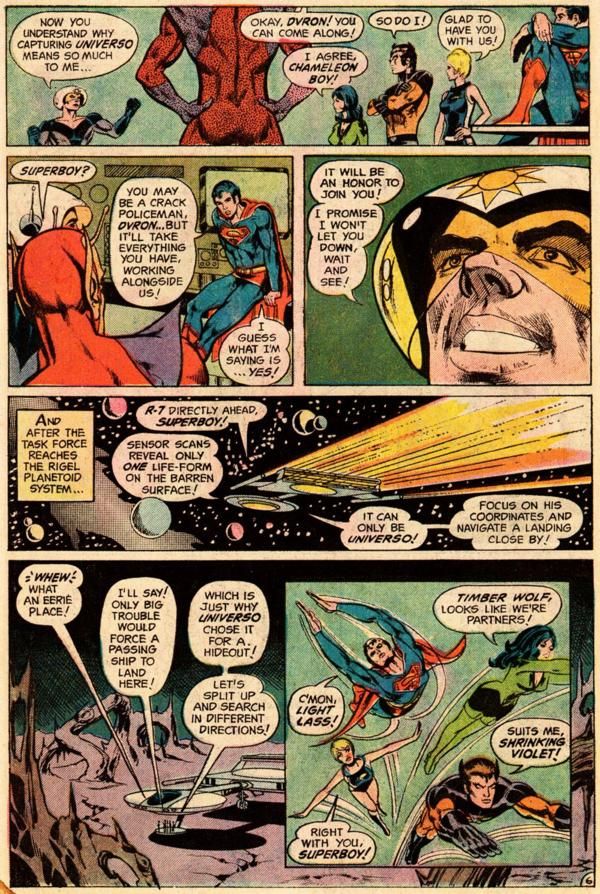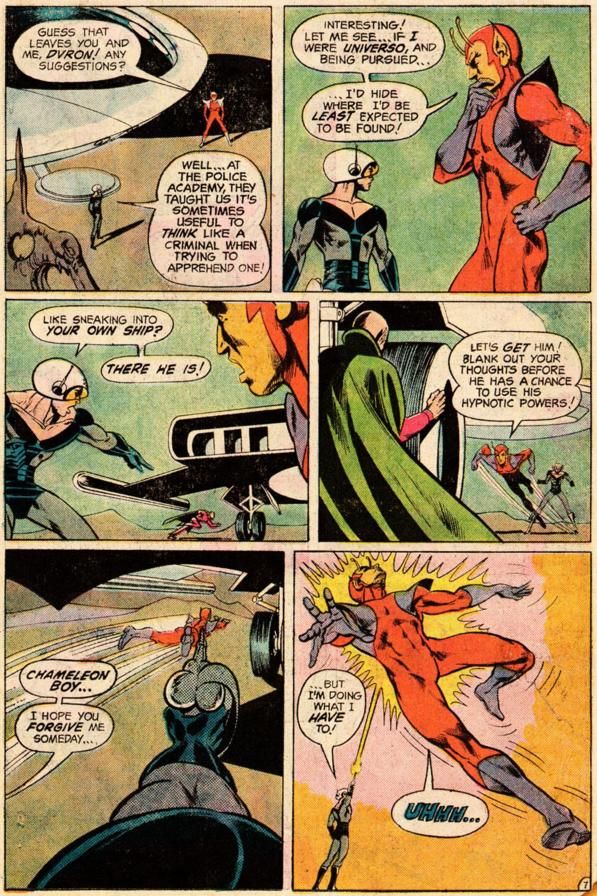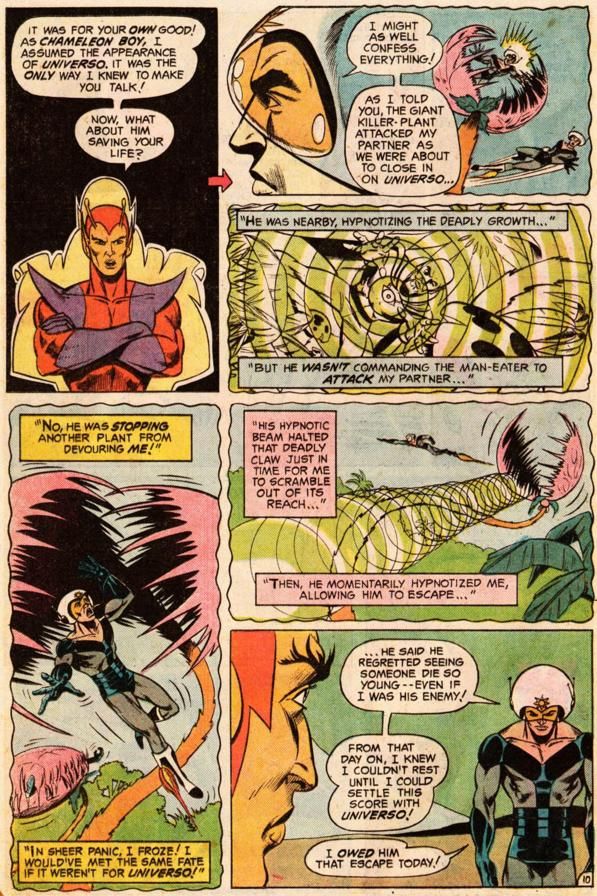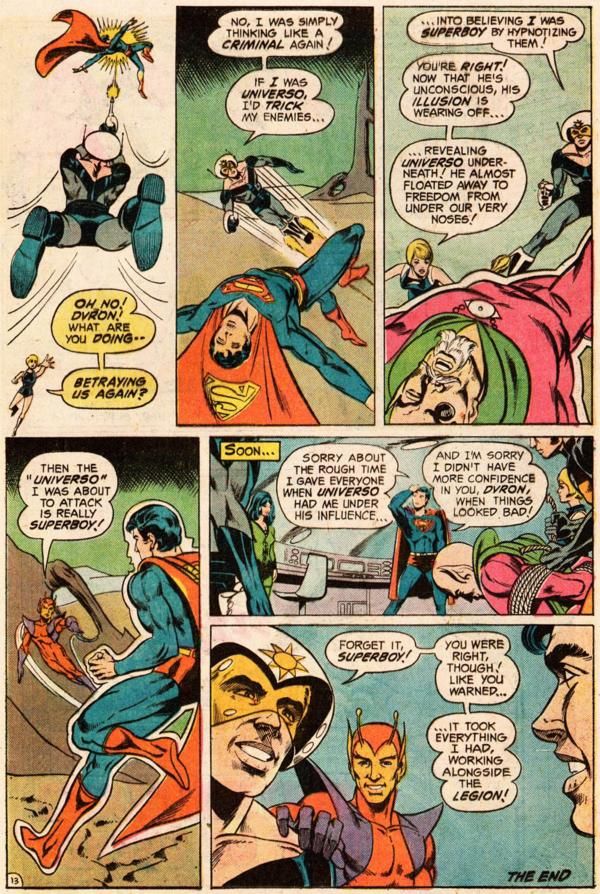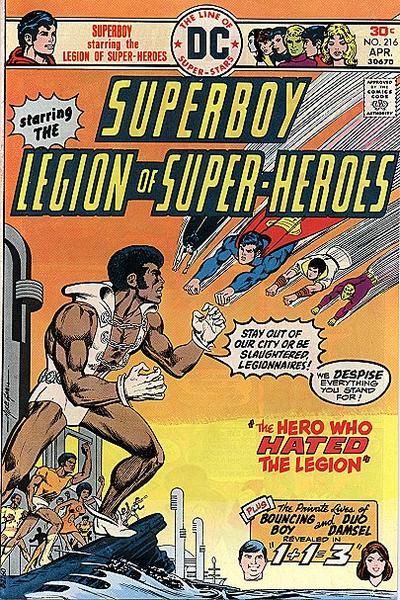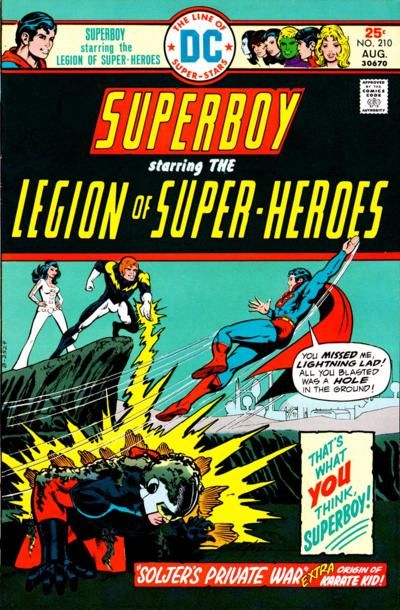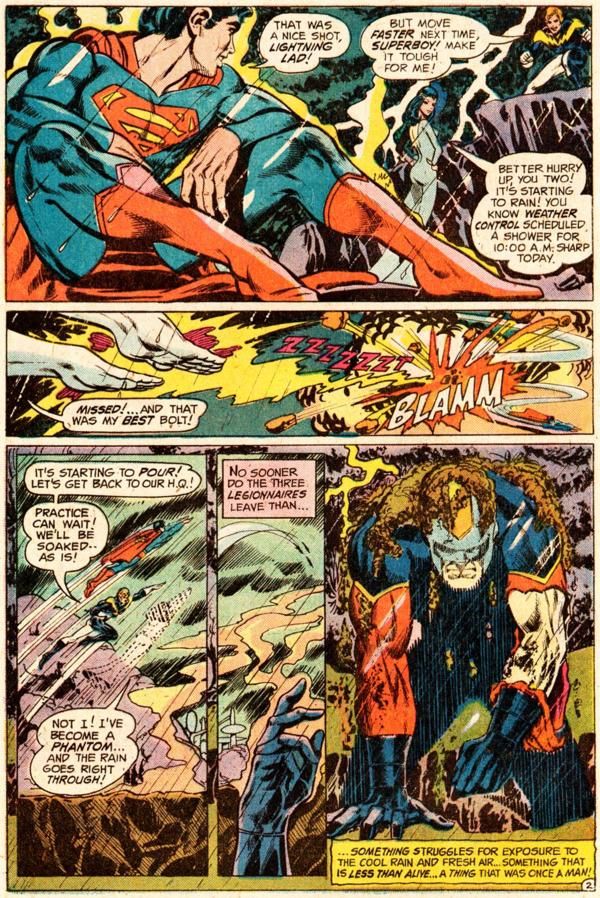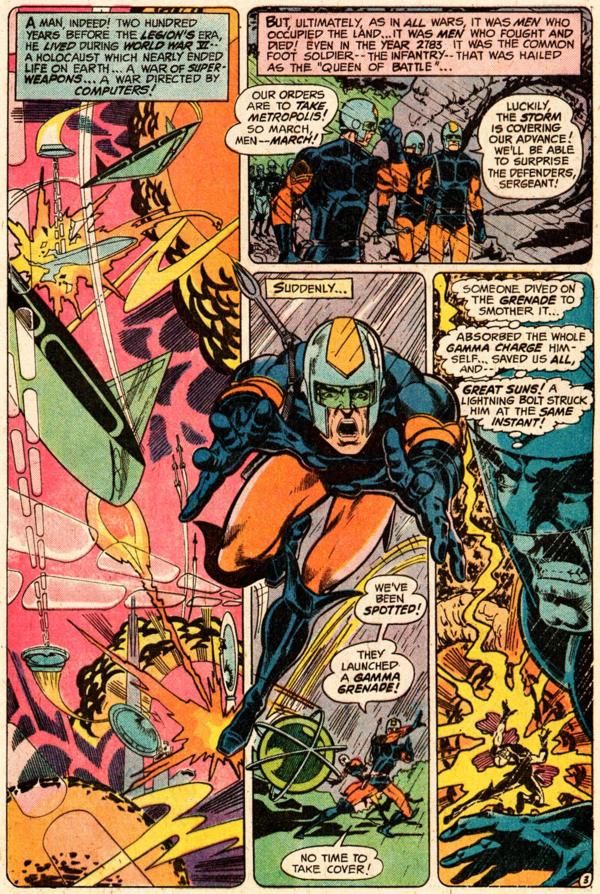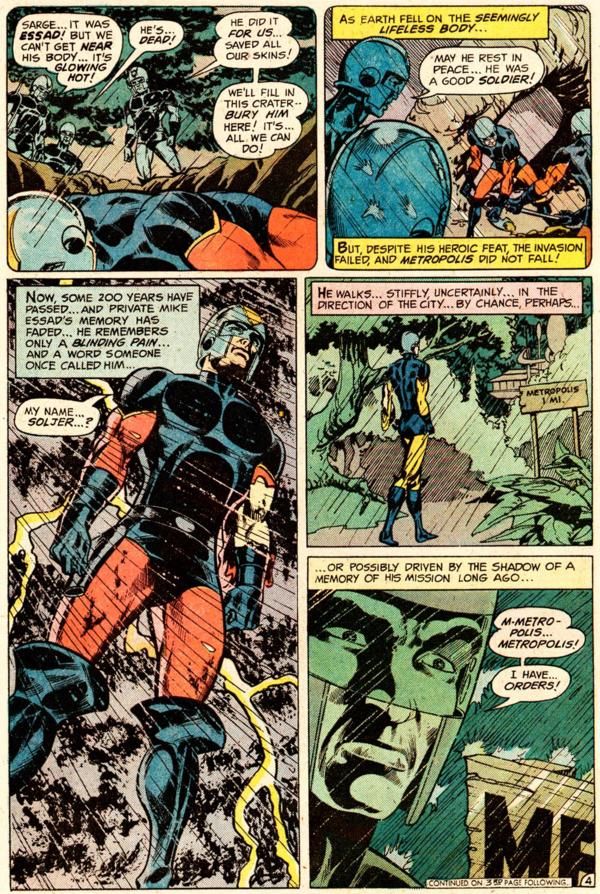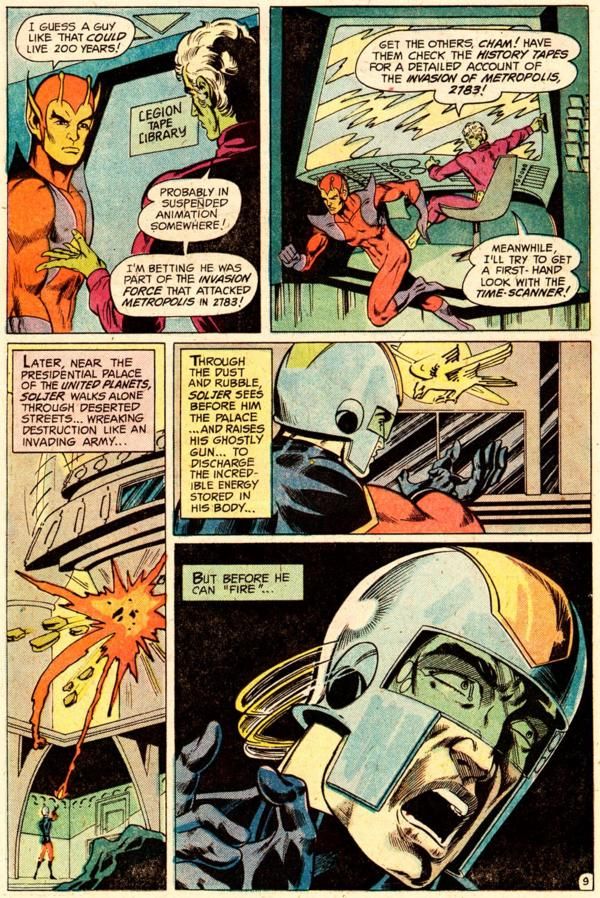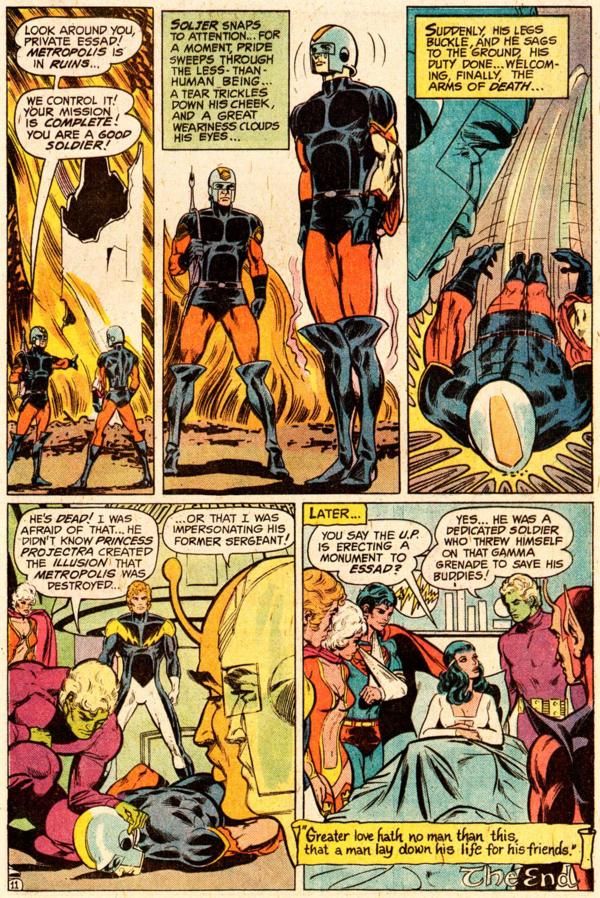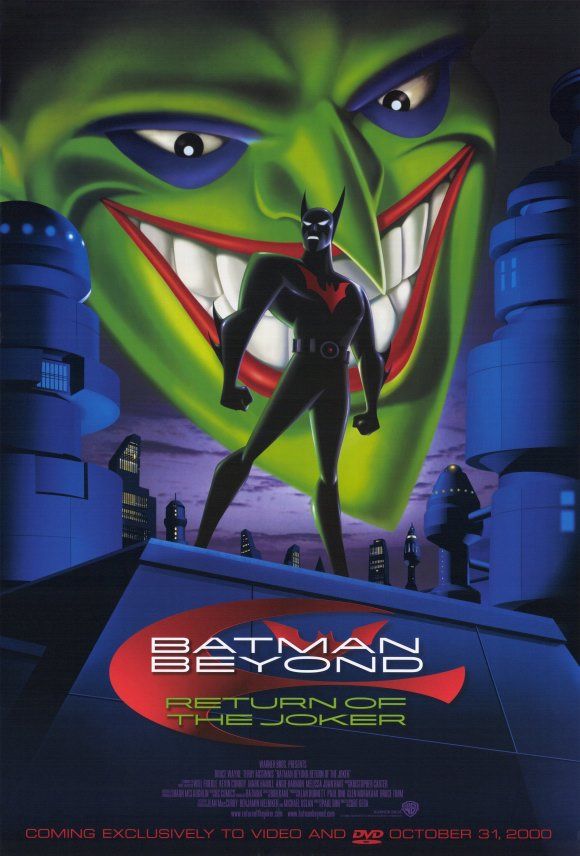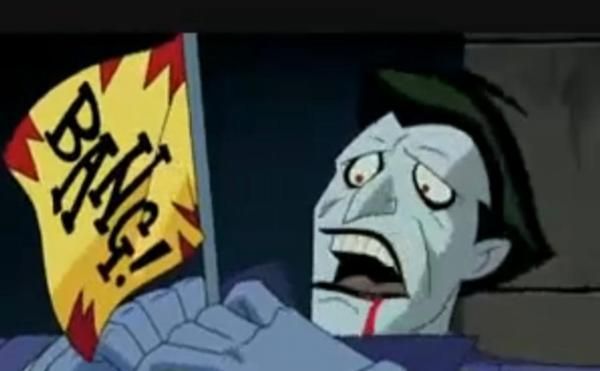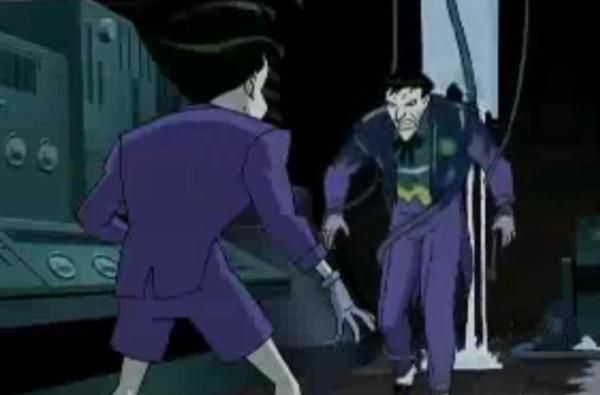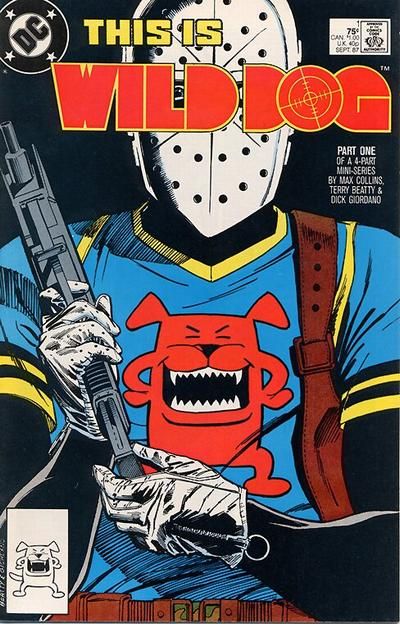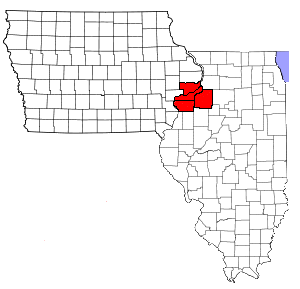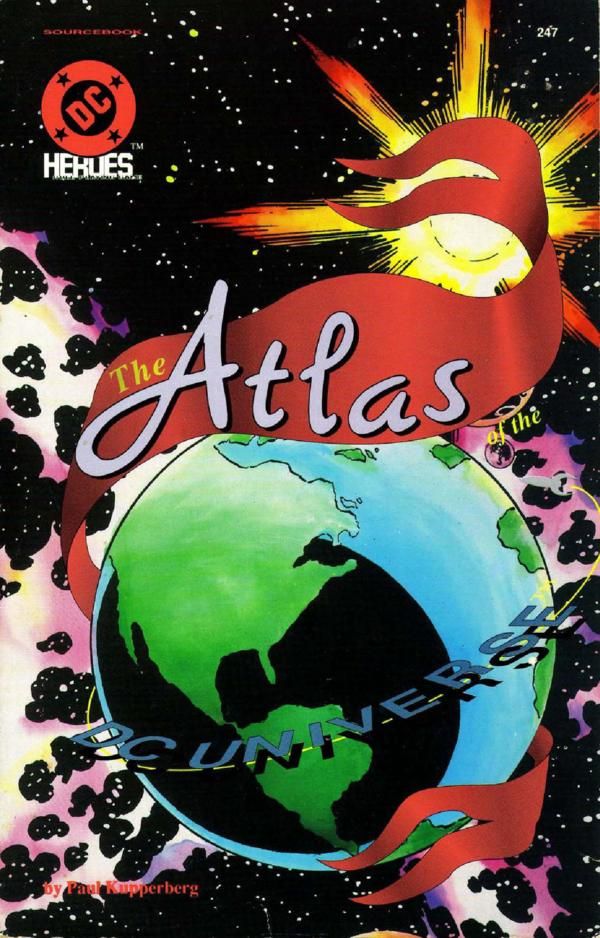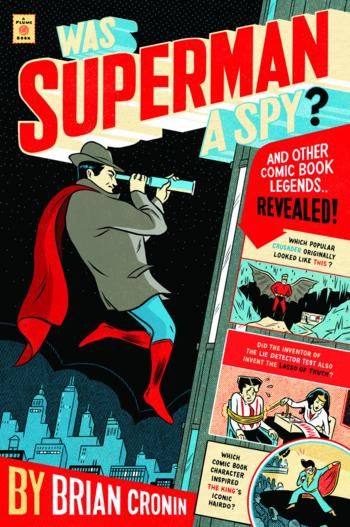Welcome to the two-hundred and twelfth in a series of examinations of comic book legends and whether they are true or false. Click here for an archive of the previous two hundred and eleven.
Comic Book Legends Revealed is now part of the larger Legends Revealed series, where I look into legends about the worlds of entertainment and sports, which you can check out here, at legendsrevealed.com.
Let's begin!
COMIC LEGEND: Mike Grell tried to introduce a black character into the pages of Superboy and the Legion of Superheroes, but saw his efforts literally whitewashed away.
STATUS: True
When Mike Grell became the new regular artist of the Legion of Superheroes (which appeared in Superboy and the Legion of Superheroes) in 1974, there was something that he noticed that troubled him a bit.
In the future world of the Legion of Superheroes, there did not seem to be any black people.
So a few issues into his run as the artist on the book, Grell took a new Science Police character that Cary Bates was introducing in Superboy and the Legion of Superheroes #207 (who appeared to be a one-off character), and drew him as a black man.
However, editor Murray Boltinoff told Grell that they were already planning on having a black character show up in a few months, so Boltinoff then had the character Grell intended to be black just colored white, instead (in addition, Boltinoff did not want the first black character in the Legion to show up as a sort of traitor).
Grell continued to pester Boltinoff over the next few months, "So, when are we going to get this black character you said we would?" until finally, Grell got his wish....and probably wished he didn't.
Superboy and the Legion of Superheroes #216, from late 1975, tried to explain why there didn't seem to be any black characters in the world of the Legion of Superheroes.
You see, they all lived on an island that, like Brigadoon, would disappear from this dimension for years at a time. And Tyroc was their resident superhero.
Grell, naturally, did not take kindly to the idea that the first black superhero in the Legion (heck, Tyroc predated Black Lightning, even!) was a separationist! As a result, he tried to make Tyroc look as goofy as he could.
Later writers tried to redeem the Tyroc character a little bit (Keith Giffen even made him President of New Earth in the Five Years Later Legion!).
Thanks to Bruce MacIntosh, from Back Issue #33, for the information!
NOTE: In the past, Grell has said that the character he drew as a black man that was "whitewashed" was the character Soljer, from Superboy and the Legion of SUPERHEROES #210...
Soljer was a, well, soldier who was killed but some sort of freak accident brought him back to life as a sort of phantom creature. He wasn't REALLY alive, but his soul told him he was. So he, in effect, got soul but he was not a soldier.
So he fights the Legion and eventually Chameleon Boy convinces him to let himself die.
However, the quote by Grell saying that it was Soljer is pretty clear that Grell is talking about the story from Superboy and the Legion of Superheroes #210.
The Soljer quote goes:
It was “Soljer,” or something like that. It was about a young man who’s one of the Space Troopers who comes into a conflicting situation. He has to make a choice. Like a lot of us, he makes a couple of mistakes, but then he turns out all right. He does the right thing in the end. I saw that as a very positive thing.
So yeah, Grell there clearly states that he doesn't remember the name exactly and he then describes the story from #207, just with the wrong name.
So it's definitely #207 that Grell was talking about.
Thanks to Michael Grabois for showing Grell's re-telling of the story from a recent convention (where he also sticks with #207 as the issue in question). But also, thanks to Glen Cadigan's Legion Companion for the earlier Grell comments, so we can see the full story!
COMIC LEGEND: Due to concerns about the violence, Batman Beyond: The Return of the Joker completely re-did the Joker's demise in the movie.
STATUS: True
Batman Beyond: The Return of the Joker was a direct to video (I almost wrote direct to DVD, but I guess in 2000, they were still mostly referred to as direct to VIDEO, weren't they?) movie in 2000, based on the then-popular Batman Beyond animated series, which took place in the future of Gotham City, where a young adult named Terry McGinnis is now Batman (using a futuristic Batman suit) with Bruce Wayne serving as his mentor.
Originally set to be released for Halloween 2000, the film had to deal with a crackdown on violence in children's entertainment that had become a bit of a political rallying cry in the months following the horrific tragedy at Columbine High School in April of 1999 (the theory being that the two teenagers who murdered their teachers and classmates were influenced by the television shows that they watched and the video games that they played).
Therefore, the Batman Beyond film was not just changed, it was dramatically re-edited. The edits took so long that the film was not released until December 12, 2000.
Whole sections were removed wholesale to remove anything possibly unwholesome, including scenes with characters who certainly appear to be prostitutes and scenes with Bruce and Terry not wearing seatbelts.
Multiple punching scenes were changed so that they only had one punch in them - really heavy duty cleansing.
One of the main plots in the story is that in the past, the Joker kidnapped Tim Drake (Robin) and brainwashed him into becoming Joker Jr., basically, then tried to make Tim kill Batman.
In the edited film, the scenes with Joker and Tim were dramatically reduced, and lines were changed like "I'll begin with how I peeled back the layers of the boy's mind" becoming "I'll begin with how I affected young Robin's makeover."
The most notable change, though, is how Joker met his demise.
In the original version, Joker hands Tim Drake a gun (with a big dart with "bang" attached to it) and orders him to kill Batman (Joker and Batman are both bloodied during the fight). Tim fights his programming and instead shoots Joker, killing him.
Joker's last words are "That's not funny."
In the edited version, Tim drops the gun and instead shoves Joker into a wall - the wall happens to have some water tubing.
Joker gets caught up in the tubes and then hits an electricity source and gets electrified. Note that in this version, Joker and Batman are not bloodied (even though you still can see the effects of the knife in the background, like a spot where a knife cut a hole in a curtain).
An interesting though about these edits, though, is really how much effect the political cries for reduced violence had to do with the edits.
It's clear that edits WERE forced on the film, but when the "Uncut" version was later released on DVD in 2002, it was rated PG-13.
If you believe that rating, you would have to think that Warner Bros. was never actually going to release a PG-13 Batman Beyond movie.
And in fact, in an interview from 2000, Bruce Timm basically said as much:
We assumed that with direct-to-video we now had this tremendous license to deal with subject matter we couldn't normally deal with. The idea was theoretically that home videos aren't bought by our younger audience, so we could put in a little more adult values. When we do a direct-to-home video, we just don't want to make it a longer episode of the show. We want to make it special. We want to give you your money's worth.
That's why we brought the Joker back. We tried to give it more depth of character, bigger and better action sequenceswe actually tried to treat it like a movie. Then the video people came back to us and told us that they wanted us to make the tape exactly for the same audience as the Kids WB!, which caught us kind of off guard.
So while, yeah, I'm sure the political climate didn't help, I think that it is pretty clear that the edits were due more to corporate miscommunication and financial decisions rather than anything else.
It reminds me a little of a bit I did the other day for Music Legends Revealed, about how folks just assume that Van Morrison was forced to change the name of his "Brown Skinned Girl" to "Brown Eyed Girl" because of frightened executives. Not everything comes down to politics!
Thanks to Steve Fritz for the Timm quote!
COMIC LEGEND: In a tie-in with Mayfair Games' DC Universe role-playing game, DC mistakenly believed that the city Wild Dog worked in was a fictional city, while it was not.
STATUS: False
Max Allan Collins and Terry Beatty's Wild Dog series took place in the mis-named Quad Cities, a collection of mid-sized communities on the border of Iowa and Illinois that are so close to each other that they all effectively work as one large city.
Originally called the Tri-Cities, the growth of East Moline, Illinois made the group the Quad Cities, with the four cities being:
Davenport, Iowa
Moline, Illinois
Rock Island, Illinois
and
East Moline, Illinois
However, for the past 50 years or so, Bettendorf, Iowa has become a significant city in its own regard, and is actually more populous than East Moline. So Bettendorf became part of the Quad Cities. Still, the Quad Cities title had stuck by then, and no clamoring for Quint Cities would do any good, so it's Quad Cities just with five cities.
In any event, the late 80s DC series Wild Dog took place in the Quad Cities.
In 1990, as a tie-in to the popular Mayfair Games DC Heroes roleplaying game, Mayfair Games put out a DC Atlas, written by DC's own Paul Kupperberg. At the time, the atlas was an "official" one, but since then, writers have basically made up their own rules about where things are in the DC Universe.
In any event, a legend sprung up that (to quote Paul Blanshard, who suggested the legend):
Mayfair put out a DC guidebook where they gave entries to DC's fictional cities such as Coast City, Star City, Ivy Town, etc. They also inadvertently gave an entry to the Quad Cities-thinking them only fictional cities from Wild Dog. However, they actually exist. I guess people need to brush up on the midwest.
I thought that that would be a hilarious legend.
And sure enough, in the book, Quad Cities IS given a write-up.
However, so were New York City, NY, Waymore, NE and Middleton, CO, all actual cities.
And Quad Cities' write-up describes Quad Cities as it actually exists (Moline, East Moline, etc.).
What Kupperberg was doing was merely listing all the cities in which DC heroes were based, whether they were real or fictional.
Thanks to Paul for the suggestion!
Okay, that's it for this week!
Thanks to the Grand Comic Book Database for this week's covers! And thanks to Brandon Hanvey for the Comic Book Legends Revealed logo!
Feel free (heck, I implore you!) to write in with your suggestions for future installments! My e-mail address is cronb01@aol.com.
As you likely know by now, at the end of April, my book finally came out!
Here is the cover by artist Mickey Duzyj. I think he did a very nice job (click to enlarge)...
If you'd like to order it, you can use the following code if you'd like to send me a bit of a referral fee...
Was Superman a Spy?: And Other Comic Book Legends Revealed
See you next week!

